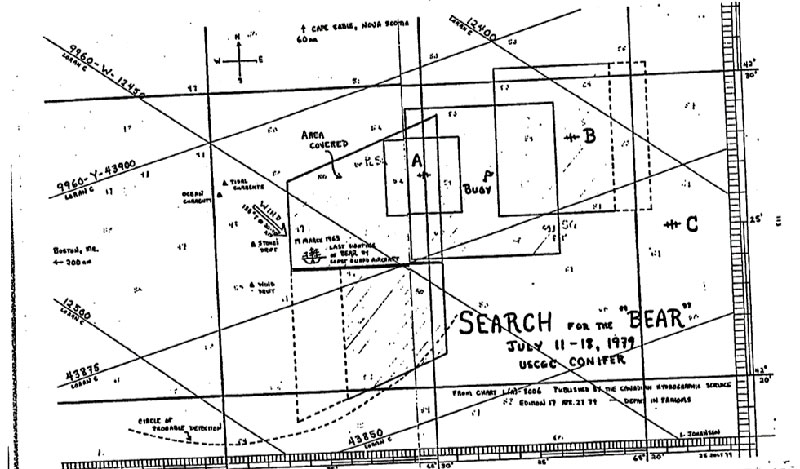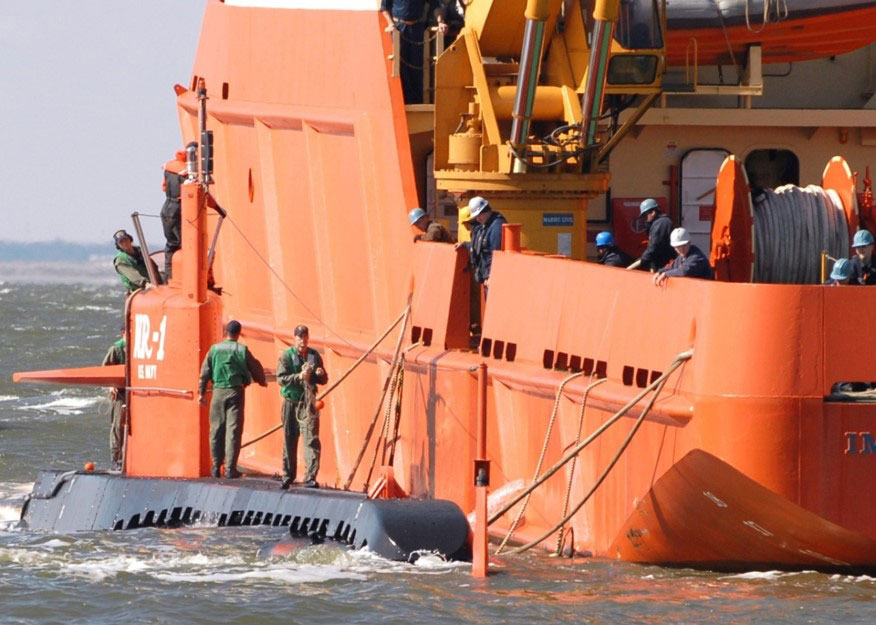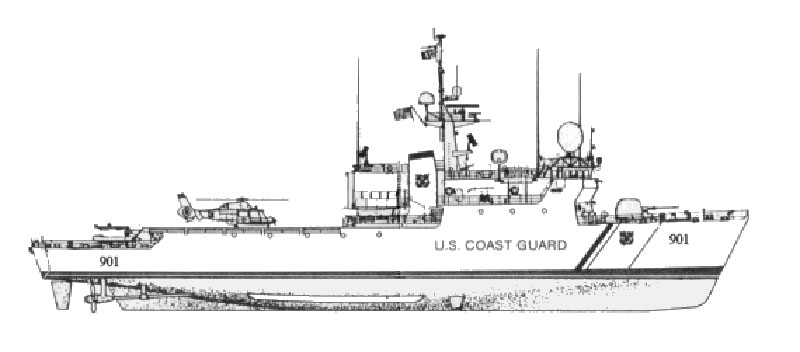
By William H. Thiesen, Historian, Coast Guard Atlantic Area

Chart from the original 1979 search for Bear undertaken by Massachusetts Institute of Technology’s Harold Edgerton and Coast Guard Academy cadets on board the Buoy Tender Conifer. Image courtesy of the U.S. Coast Guard. Download larger version (jpg, 119 KB).
The Bear’s story did not end with the sinking of the cutter. Instead, a new chapter of the cutter’s history had begun and, within about 15 years of its sinking, the search for Bear was on.
In the spring of 1979, a search group formed around 11 Coast Guard Academy cadets; four advisors; and Massachusetts Institute of Technology’s Harold Edgerton, inventor of side-scan sonar. The search effort took two weeks and relied on the Coast Guard buoy tender Conifer as a test platform for the revolutionary new technology. The team used accounts from the Coast Guard pilots that overflew Bear and the skipper of the tug Irving Birch from the day Bear was lost. Project highlights included the first practical use of side-scan sonar, the Coast Guard’s new LORAN-C navigation system, and the integration of the two into an underwater search. The team also used the relatively new technology of videotape documentation.
However, problems emerged from the 1979 search data set. For example, the 1979 search expedition was unable to document the location of the search area. In addition, the team’s final report did not include a post-cruise analysis of the side-scan sonar results.

Photo of the Navy’s deep-sea diving submersible NR-1 prior to her decommissioning in 2009. Image courtesy of the U.S. Navy. Download larger version (jpg, 367 KB).
In 2007, another search was coordinated with the U.S. Navy’s NR-1 deep-sea submersible. This time, the research team did an excellent job of preserving written documents, proposals, and research. However, obtaining information from the Navy proved problematic. It took four months just to locate and talk to NR-1’s Commanding Officer. Research data was passed to the U.S. Coast Guard, but two CDs containing search information later went missing. In addition, this was the last mission of the super-secret NR-1 before its decommissioning and its logs were unavailable after its retirement.
In recent years, NOAA and the U.S. Coast Guard have teamed up with other partners to locate the wreck site. NOAA’s engagement includes the Office of Marine and Aviation Operations, Office of Coast Survey, Office of Ocean Exploration and Research, and Office of National Marine Sanctuaries.

Profile view of the “Famous”-Class medium-endurance cutter Bear, currently underway to search for the wreck of the original Bear. Image courtesy of the U.S. Coast Guard. Download image (jpg, 36 KB).
The project’s current focus is to conduct surveys, gather and preserve data, and locate and catalog existing Bear artifacts. Most importantly, the program plans to locate the Bear’s final resting place and seek National Historic Register status for the wreck.